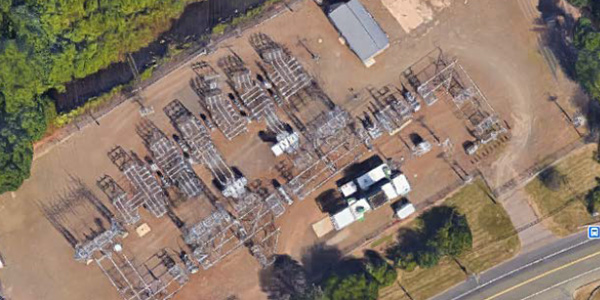Eversource Energy and Vermont Electric Power Co. (VELCO) each presented replacement and refurbishment projects to the ISO-NE Planning Advisory Committee on Wednesday, with Eversource detailing its preferred solution to replace the only self-contained fluid-filled cable on its Connecticut transmission system.
Eversource’s Paul Melzen said the utility plans to remove 400 feet of the existing cable system and install 520 feet of solid dielectric cable in the duct bank at Branford 11J, a 115/23-kV substation located along the Connecticut shoreline. The project also calls for replacing two existing bus support structures and the relocation of an NRG Energy-owned 23-kV circuit from a combustion turbine housed in the substation to accommodate the route of the 115-kV duct bank.
The work’s estimated cost is $8.8 million, with a projected in-service date in the fourth quarter.
The fluid-filled cable was initially manufactured in 1981, and its creators are no longer in business. The cable has logged 26 work orders since 2005, including fluid leaks that increased maintenance burdens and reliability concerns. The continued decrease in oil pressure or oil level will eventually result in a trip of the cable. There was a service interruption in March 2017 that required complex restoration methods, according to Melzen. The cable is also located near a waterway, an environmental risk.

Eversource Energy wants to replace a self-contained, fluid-filled cable system with a solid dielectric cable system at a substation in Branford, Conn. | Eversource Energy
Melzen mentioned two potential alternatives to Eversource’s preferred solution. One is replacing the existing fluid-filled cable system with a new one, which would create the need for dielectric fluid accumulators, fluid-level pressure alarms, and additional maintenance and operational requirements. It would additionally pose an environmental threat with the release of dielectric fluid. There would also be limited equipment suppliers. The second is replacing the current cable system with an overhead bus, but there is a lack of real estate in and around the substation to accommodate it.
Hantz Presume of VELCO outlined three transmission line refurbishment projects at an estimated cost of $31.6 million, with the work completed between 2022 and 2024.
The most significant portion of the work will be along the 26.4-mile line from Essex to Middlesex, where 116 out of 305 wood H-frame structures with rotten pole tops and cross arms will be replaced with mostly steel H-frames to reduce VELCO’s current wood pole inventory. The line location is primarily mountainous, with difficult access and a challenging sloped right of way. The estimated cost is $15.2 million for the project, which is expected to be completed in 2024.
The other two projects are similar refurbishments along lines between Essex and Sandbar (11.2 miles) and West Rutland to Blissville (11.6 miles) that are expected to cost a combined $16.4 million and replace a total of 123 wooden frames with steel by 2022. Both lines have seen rotten crossarms and pole tops, and moderate to severe woodpecker damage.
Additional Items
- ISO-NE Director of Transmission Planning Brett Oberlin gave a forward-looking presentation on dynamic reactive power devices. The RTO would like to use synchronous condensers as the preferred device to address system concerns identified in needs assessments, except under specific system limitations. Oberlin asked for stakeholder feedback by March 4.
- Steven Judd, principal engineer in system planning for ISO-NE, provided stakeholders a summary of DNV GL’s stochastic time series analysis of variable energy resources (VERs). The RTO initially hired DNV GL in 2019 to use its weather modeling software and develop a historical dataset of all existing wind plants and future offshore wind plants from 2012 to 2018. It now contains hourly time series data for VERs, load and weather data in New England for 20 years (2000-2019). DNV GL also developed the Stochastic Engine, which can resample wind speed, irradiance, price and load into parallel and plausible scenarios. The weather-to-generation models simulate each weather scenario’s expected power production, creating thousands of 20-year simulations of hourly weather and power outputs.



